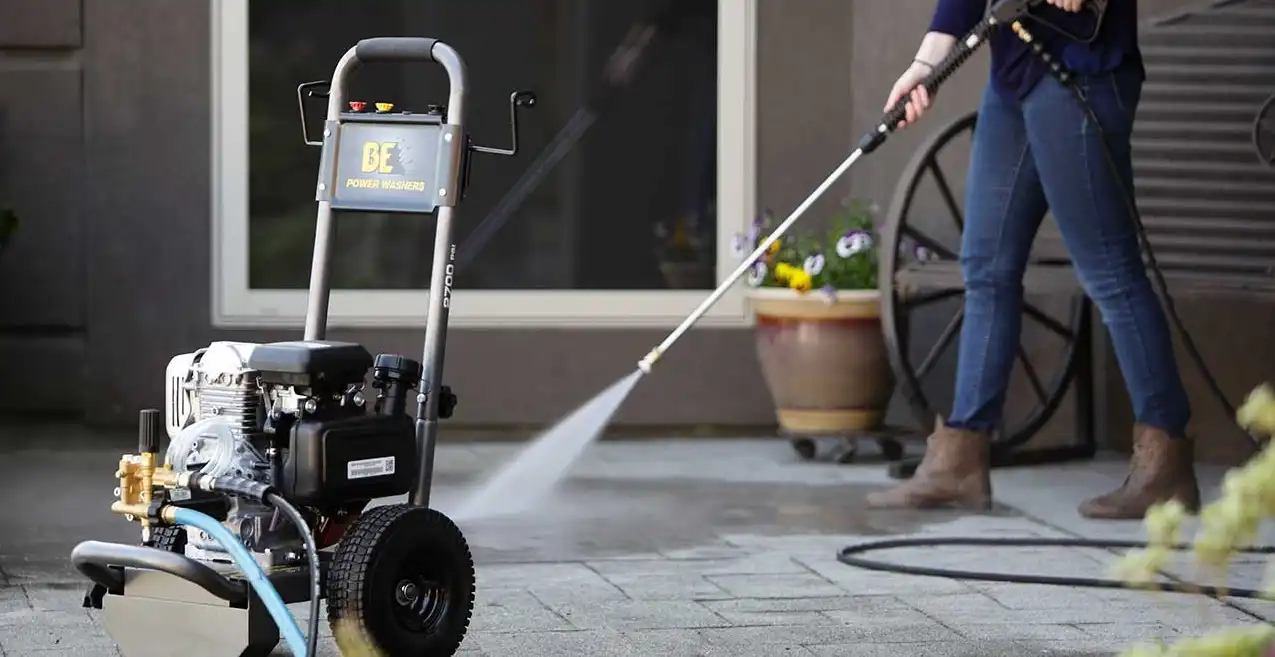Pressure washers are valuable tools to clean dirt, debris and tough stains from different surfaces. The most important factor that comes into action is pressure for cleaning and it depends on several factors including PSI and the size and angle of nozzles. Therefore, you should have correct knowledge about these factors for efficient cleaning and working of the device.
This article is going to provide a guide about how pressure washer surface cleaner nozzles work and what should be the angle between the target surface and the nozzle.
Read till the end to know all about the angle of pressure washer surface cleaner nozzle.
Working of Pressure Washer Surface Cleaner Nozzle
The pressure washer surface noodle works by combining the internal design of the nozzle and the water pressure it can deliver. When the water is pushed through the nozzle it passes through a small orifice and creates a high velocity stream. The smaller the orifice is , the greater the pressure inside it and the flow rate of water increases.
You must have seen that when you force water from a nozzle it makes a specific spray pattern that depends on the shape of the internal parts of the nozzle. If you can adjust the angle of the nozzle, you can control the power of spray and width of the spray pattern and utilise the versatile cleaning capability of pressure washer surface cleaner.
Types of Nozzles and their uses
The nozzles for pressure washer surface cleaner come in many shapes and sizes and each one is to be used according to the cleaning task it is desired to perform. The most common types that you can find are 0 degree, 15 degree, 25 degree, and 40 degree nozzles.
· The 0 degree nozzle is perfect for areas where intense cleaning is required. It produces a narrow and concentrated stream which makes it ideal for getting rid of stubborn stains.
· The 15 degree nozzle is used on heavy duty cleaning operations. It creates a slightly wider fan-shaped spray to clean away the sticky debris and get rid of mould stains. Mostly, when durable surfaces are involved a 15 degree nozzle works at its best.
· A 25 degree nozzle is utilised for general cleaning purposes like cleaning ship decks and washing surfaces like concrete sidewalks. It provides a broader spray pattern and balances cleaning power. Usually when general or slightly professional tasks are involved a 25 degrees nozzle works the best.
· A 40 degree nozzle is used for delicate surfaces or where the cleaning process involves detergent applications. It produces a wide and gentle spray pattern that washes the dirt away smoothly without damaging the surface.
Effect on Nozzle Angle on Cleaning Process
Have you ever watered the plants in your backyard? If yes, then you must know that the angle of the water pipe has a great effect on pressure. And if you are watering your greenish friends after a heavy wind storm then you must have known how the pressure of the pipe opening changes when you change its angle and which angle is the best to remove dirt and dust from the leaves.
Well! The angle of Nozzle plays an important role in the efficiency of the cleaning process. Together with the internal build of the nozzle it determines the pressure and the width of the spray pattern to increase or decrease the water stream intensity. When the angle is small, such as 0 or 15 degrees, the stream is narrow and the pressure is higher. Water is pushed with great pressure on the stubborn stains and as a result you get a clean surface.
However, when the angle is 25 or 40 degrees the spray patterns are broader and the pressure is less. These types of nozzle angles are utilised at places where the target surface is sensitive. Therefore, the angle of nozzle should be selected keeping the target surface in mind to avoid damage due to pressure intensities.
The nozzle angle is important to consider while cleaning a surface area because it is lower for the areas with harder surfaces. At lower angles the water pressure and influx is higher so greater cleaning results are achieved. However, if the angle is higher the pressure is less and so is the water influx.
Factors to consider when choosing the nozzle angle
Selection of nozzle angles to achieve the best influx of water and pressure for cleaning there are special factors that need to be considered. The main aim of using nozzles is to clean the surface without putting any damage to the surface. Here are the factors that you should keep in mind while choosing an angle for the cleaning purpose.
Level of Cleaning
First of all you have to consider the type of debris or stains that need to be cleaned and then you should decide the pressure level and the spray patterns you need. For example, if you want to remove deep stains then a narrow angle is best to get the benefits of cleaning. However, if the stains are shallow, a wider angle works the best.
Surface nature
You must evaluate the sensitivity of the surface before cleaning. If the surfaces to be cleaned are sensitive then you should go for angles like 25 or 40 degrees. However, if the surface is hard like tiles or floor then narrow angles are best to use. Still, don’t forget to look out for stripping while operations.
Operation skills
Pressure washer operations are not as simple as they look. A complete precision and control is required to compensate for the pressure levels. Narrow angles operations demand more exceptional skills of operating pressure washer while broader angles require less skills. You can say that beginners can handle wider angles too.
Final Words
Choosing the best angle for pressure washer is necessary for achieving the best cleaning performance. Keep in mind that high pressure can be damaging to delicate surfaces, so clean gently and for best cleaning experience get your pressure washer surface cleaner from Eveage tools.


